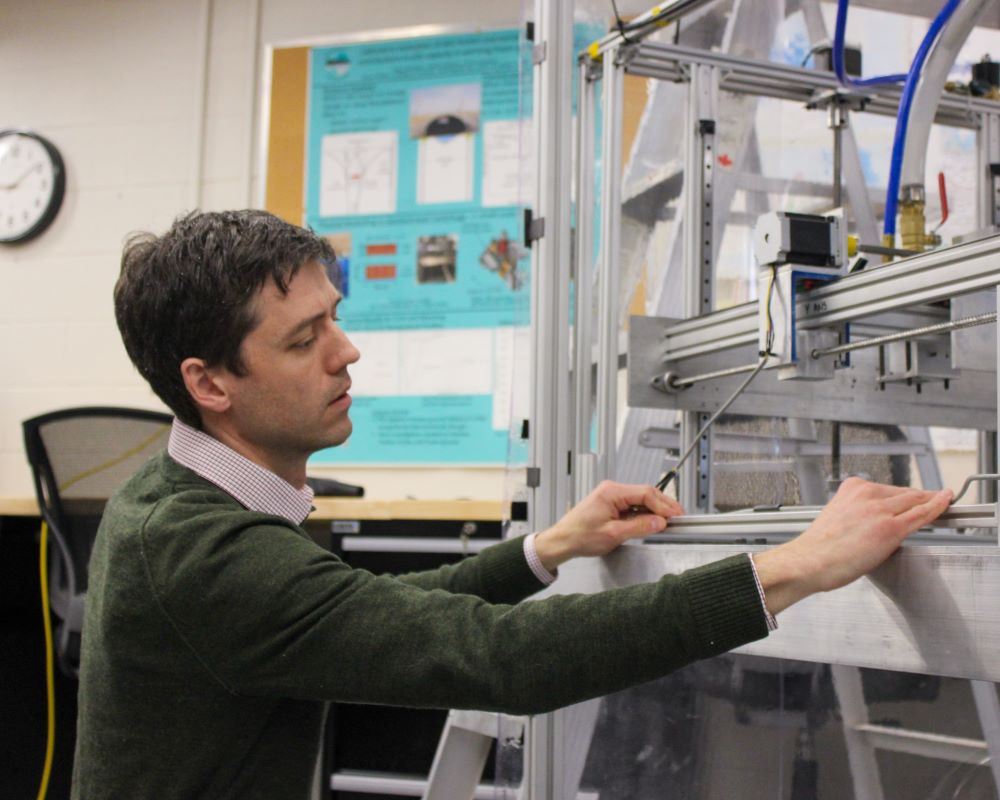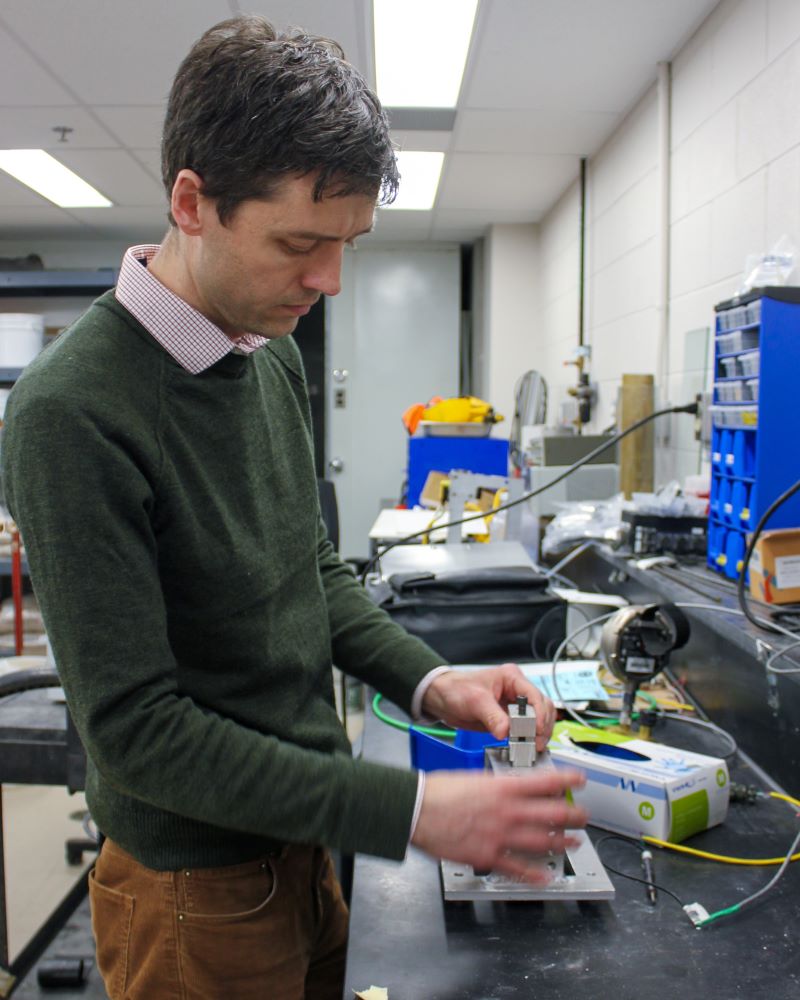
As the climate changes, more extreme weather and changes in air and ground temperature pose a risk to the infrastructure we all rely on.
But even as weather conditions grow increasingly unpredictable, that doesn’t mean the scientific rules behind it change. It’s why Geoff Eichhorn (Sc’10, Geological Engineering) works with physical models to understand how climate change can affect the soil, and how that can further impact the infrastructure buried underneath or resting atop it.
“In industry I saw the real challenges that some of our industry partners were facing from natural disasters,” he says. “Industry, utility operators, and governments are all making these asset and risk reducing activity decisions based on risk, which means in some cases we have to understand a little more about the underlying science behind some of these environmental interactions with infrastructure in extreme events.”
Eichhorn completed his undergraduate degree at Queen’s in Geological Engineering, and immediately put that knowledge into practice working on projects in Western Canada and the Arctic such as roads, utility corridors, and pipelines. Eichhorn’s background in geological engineering was a good foundation to examine the variability of earth materials and how these impact engineering design decisions for infrastructure. His experience in engineering consulting laid the foundation for his future research.
Wanting to expand his horizons, Eichhorn transitioned back to academia to complete a PhD in Geotechnical Engineering at the University of Cambridge. His doctoral studies focused on landslide mobilization and the impact that has on buried infrastructure, such as pipelines used for natural gas or water.
“My interest was really motivated by these large unknowns, and I saw opportunity to do targeted and interesting research that would have meaningful impact for communities, industry, and all Canadians,” says Eichhorn.
Returning to Canada during the COVID-19 pandemic, he continued his academic journey with a postdoctoral position at Royal Military College in Kingston. His post-doctoral studies allowed him to engage in groundbreaking research with a focus on Arctic engineering and the impact of permafrost on infrastructure. He made the move back to Queen’s as Assistant Professor in October 2023.
While he initially entered academia with a primary interest in research, Eichhorn has discovered a newfound passion for teaching. He co-teaches an upper-year design course and is slated to teach other design spine courses in Civil Engineering.
“I’m excited about taking on design spine courses in Civil Engineering which will leverage my industry experience so I can take students beyond talking about the engineering mechanics to the logistics, the project management, the deliverables, and the impact on communities and Canadians” he says. “The teaching aspect I like most is seeing students get excited about the impact of their learning, and when they go out into their careers to apply what they’ve learned.”
Eichhorn is also set to participate in a cutting-edge laboratory – the CASTLE Lab – dedicated to climate-adaptive infrastructure and longevity evaluation. The lab is a partnership between Queen’s and the Royal Military College (RMC) and is co-funded by the Canada Foundation for Innovation (CFI), the Province of Ontario, RMC, and Queen’s University. This facility, which will be under construction this spring, will be equipped with a geotechnical centrifuge and ultra-large triaxial soil strength testing facility. The CASTLE will serve as a hub for innovative research particularly in the realm of soil-structure interaction, climate adaptive technologies and cold regions geotechnics, among others.
“The centrifuge is basically a giant washing machine about the size of a house,” he says. “Using it, I might take a model about the size of a small dining room table, place it in the centrifuge, and study it as it is accelerated around in a circle which has an effect of multiplying all the forces on the model, and the dimensions. In this way, the tiny model is actually representing large scale engineering problem in the real world.” The centrifuge is also capable of speeding up time dependant processes like groundwater flow and consolidation of soil. One benefit of examining real world problems in this way is that we can instrument the problem with sensors and observe things in the subsurface which would otherwise be impossible at full scale. Processes that are either destructive or impractical to recreate at full scale (eg. Earthquakes, flooding) become achievable in a centrifuge and allow us to examine the mechanics behind these processes when the underlying maths are not well developed to study things through numerical models.
One of Eichhorn’s upcoming research projects builds on research he has done in the past and aims to investigate Artic wind turbine foundations. The denser, colder wind in Arctic regions holds significant promise for energy generation, but the prospect of thawing permafrost makes building wind turbines in these areas a riskier proposition – one Eichhorn hopes to derisk through his research.
“Landing back at Queen’s to continue my research was a natural fit,” he says. “I would say our Civil Engineering department is one of the top tier civil engineering departments in the country, if not in North America. I’m really pleased that it all worked out.”
